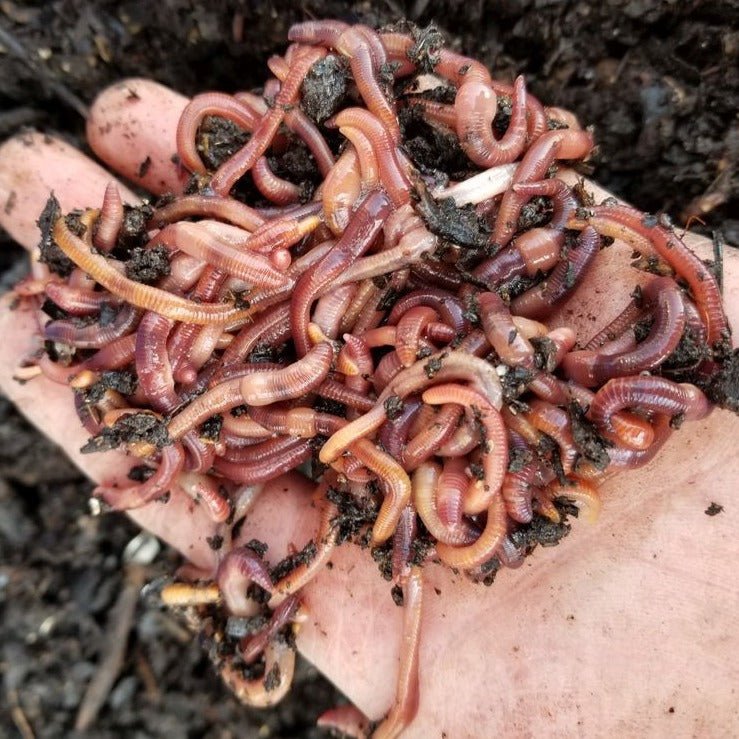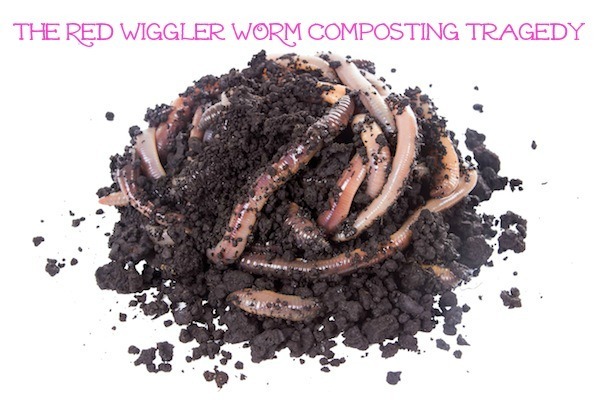Change Your Waste with Red Wiggler Composting: A Complete Beginner's Guide
Change Your Waste with Red Wiggler Composting: A Complete Beginner's Guide
Blog Article
Understanding the Conveniences of Red Wiggler Composting: Exactly How This Efficient Approach Transforms Organic Waste Into Nutrient-Rich Dirt Changes
Red Wiggler composting, utilizing the species Eisenia fetida, provides a compelling strategy to organic waste monitoring, converting kitchen scraps and backyard debris right into important dirt changes. This approach not only boosts soil fertility yet likewise addresses pushing environmental problems, including land fill waste reduction and greenhouse gas discharges. As we explore the details of this process, the diverse advantages it uses might reveal unforeseen understandings right into lasting practices and environmental balance. Recognizing these measurements might prompt a reevaluation of just how we perceive waste and its prospective payments to a much healthier planet.
What Are Red Wigglers?
Red wigglers, medically referred to as Eisenia fetida, are a species of earthworm that play a critical function in vermicomposting systems. These worms are defined by their reddish-brown shade, fractional bodies, and an unique capacity to grow in organic-rich settings, making them ideal for composting applications - Red Wiggler Composting. Unlike their garden-dwelling counterparts, red wigglers choose to occupy the top layers of dirt, where rotting issue is plentiful
Normally determining between 3 to 4 inches in size, red wigglers have a high reproductive rate, enabling them to increase rapidly under optimum conditions. They have a special digestive system that permits them to process natural waste efficiently, transforming it into nutrient-rich spreadings, which are highly helpful for plant growth.
Their resistance to differing wetness degrees and temperature varies even more boosts their utility in vermicomposting setups, making them a popular choice amongst composting enthusiasts. In addition, red wigglers are cardio microorganisms, which demands a well-aerated composting setting, making sure effective decay. Recognizing the biological qualities and actions of red wigglers is vital for maximizing their use in sustainable waste administration techniques.

Advantages of Vermicomposting
Harnessing the power of vermicomposting deals a plethora of ecological and agricultural advantages. First of all, it substantially decreases organic waste in land fills, consequently lessening methane discharges, a potent greenhouse gas. By diverting food scraps and backyard waste to vermicomposting, we sustain a more lasting waste management system.
In addition, vermicomposting improves soil wellness. The castings generated by red wigglers are rich in essential nutrients, germs, and enzymes, improving dirt structure and fertility. This nutrient-rich modification promotes durable plant growth and boosts water retention, decreasing the demand for chemical fertilizers.
In addition, vermicomposting fosters biodiversity in the soil ecological community. The introduction of valuable microorganisms from worm castings help in disease reductions and nutrient biking, producing a much healthier environment for plants.
Economically, vermicomposting lowers the costs connected with chemical inputs and waste disposal. Gardeners and farmers can grow premium fruit and vegetables at lower costs, adding to food security and sustainability.
How to Start Composting
Starting a composting venture can be a satisfying and uncomplicated procedure. This will certainly assist preserve a balanced temperature, crucial for the composting process.
Gather natural products such as kitchen area scraps, from this source lawn waste, and shredded paper. Goal for a balanced mix of 'eco-friendly' materials, high in nitrogen (e.g., fruit scraps, coffee grounds), and 'brownish' products, rich in carbon (e.g., dried leaves, cardboard) A ratio of about 2:1 environment-friendly to brownish materials is perfect.
Start layering your products, making sure appropriate air flow by turning the heap consistently. This advertises aerobic disintegration, lowering odors and speeding up the procedure. Monitor dampness levels; the compost must seem like a moist sponge however not overly damp.
Nutrient Profile of Vermicompost
Composting, specifically with red wigglers, produces a nutrient-rich item understood as vermicompost. In addition, it provides micronutrients like calcium, iron, and magnesium, promoting durable plant growth and enhancing soil health and wellness.
The microbial activity existing in vermicompost better improves its account, introducing advantageous germs and fungis that advertise vitamins and mineral schedule and uptake in plants. This organic part help in subduing plant conditions and boosting dirt framework, bring about boosted water retention and oygenation.

Environmental Influence of Composting
The ecological impact of composting, specifically via the use of red wigglers, is complex and profound. This technique dramatically decreases the volume of natural waste sent out to landfills, which in turn minimizes greenhouse gas exhausts, particularly methane-- a powerful factor to climate modification. By Extra resources drawing away natural products from land fills, red wiggler composting not just helps reduce environmental deterioration yet additionally advertises lasting waste monitoring practices.

Furthermore, composting contributes to carbon sequestration, as the process records co2 from the ambience and shops it in the dirt. This all-natural procedure aids in combating environment modification while improving the soil - Red Wiggler Composting. On the whole, red wiggler composting offers a feasible, eco-friendly option for waste management and environmental sustainability, advertising healthier environments and an extra sustainable future
Final Thought
In final thought, Red Wiggler composting offers as an efficient technique for converting organic waste into important soil amendments. The process investigate this site not just boosts dirt fertility and framework however likewise reduces environmental problems connected with waste disposal.
Red Wiggler composting, utilizing the types Eisenia fetida, provides a compelling approach to natural waste monitoring, transforming kitchen area scraps and yard debris right into useful soil amendments. Unlike their garden-dwelling equivalents, red wigglers favor to populate the upper layers of soil, where rotting matter is abundant.
The spreadings generated by red wigglers are rich in vital nutrients, microbes, and enzymes, boosting dirt structure and fertility. The nutrient-rich results of red wiggler task improve soil framework, increase water retention, and promote biodiversity within the dirt ecological community.In conclusion, Red Wiggler composting offers as an efficient method for transforming organic waste right into useful soil modifications.
Report this page